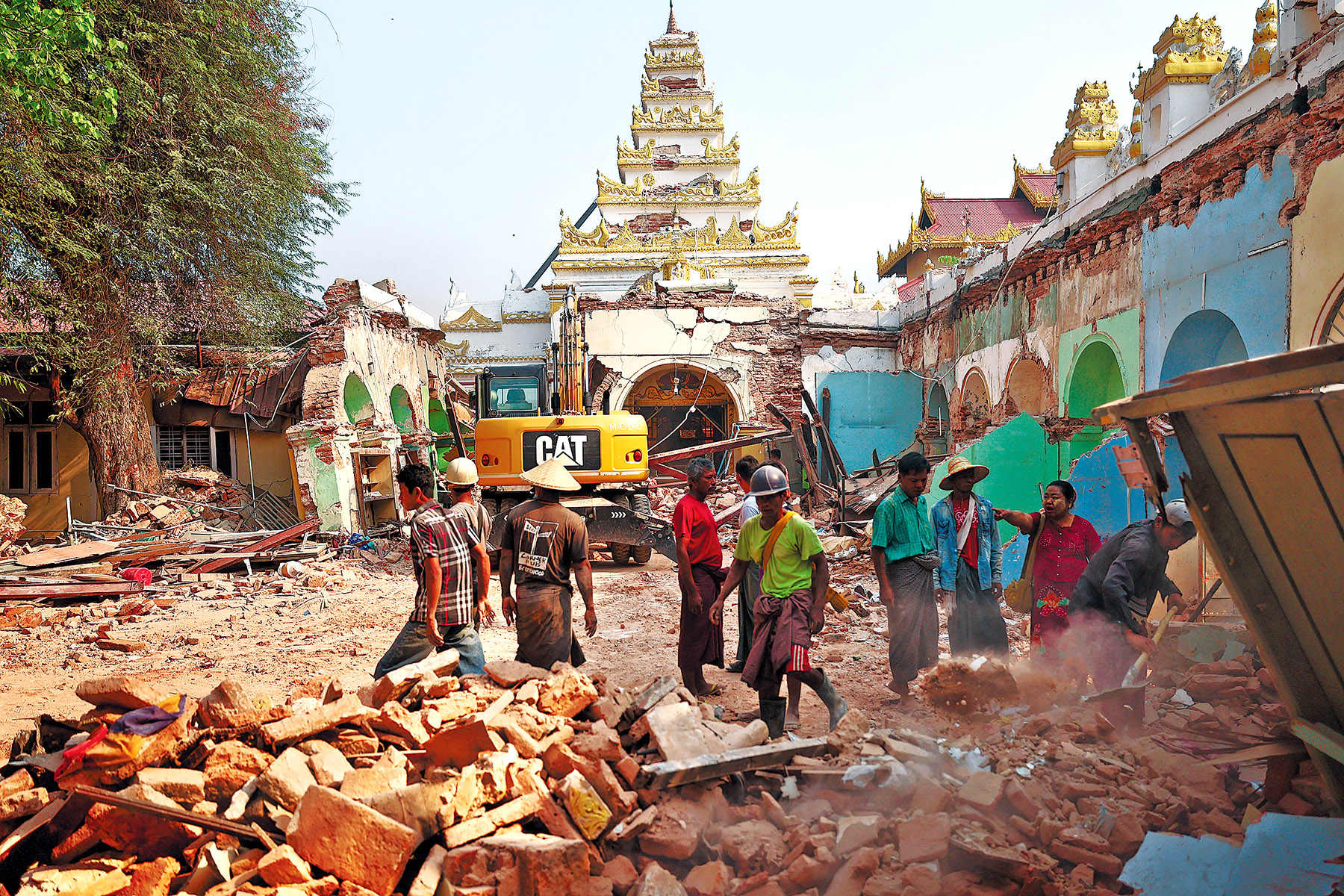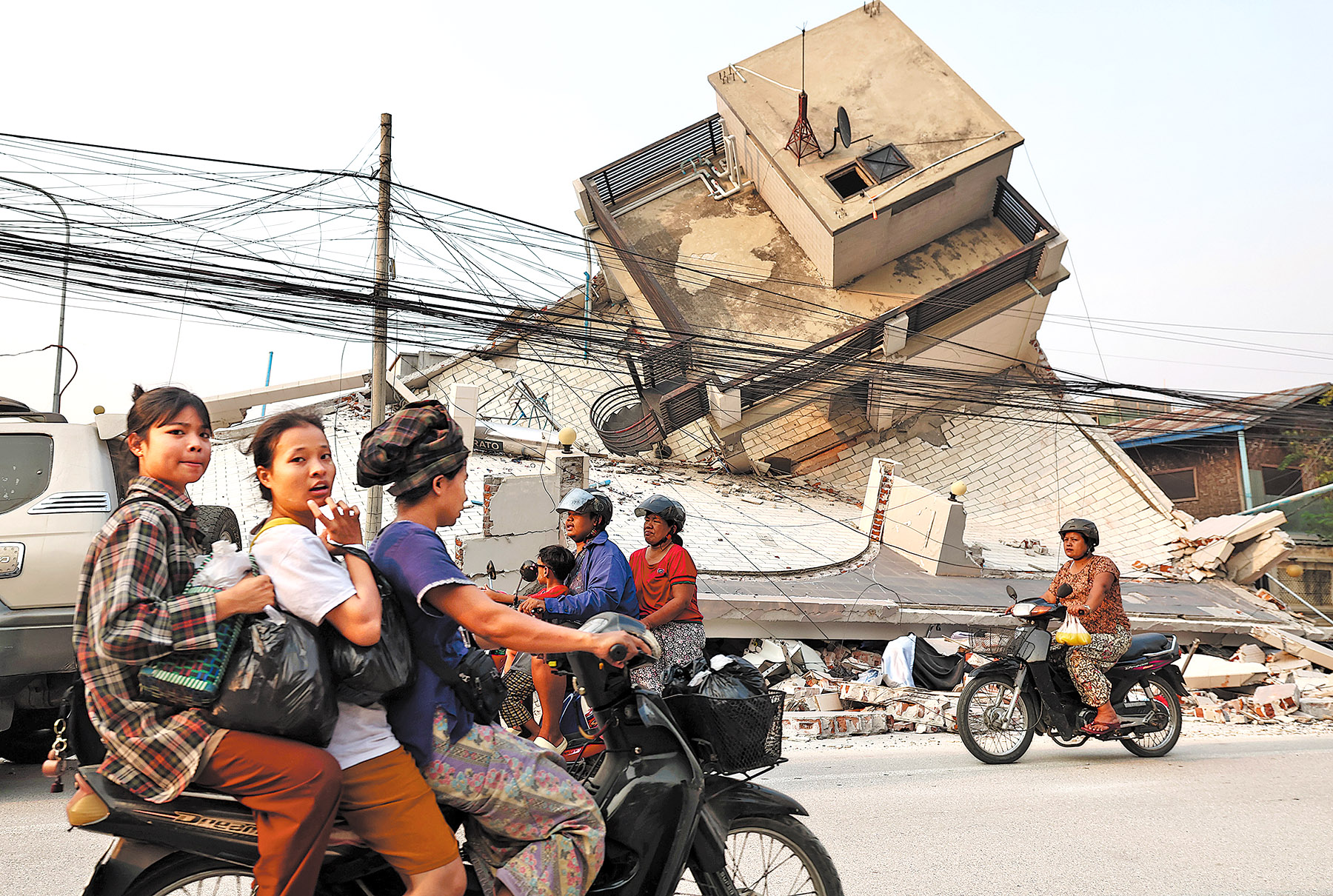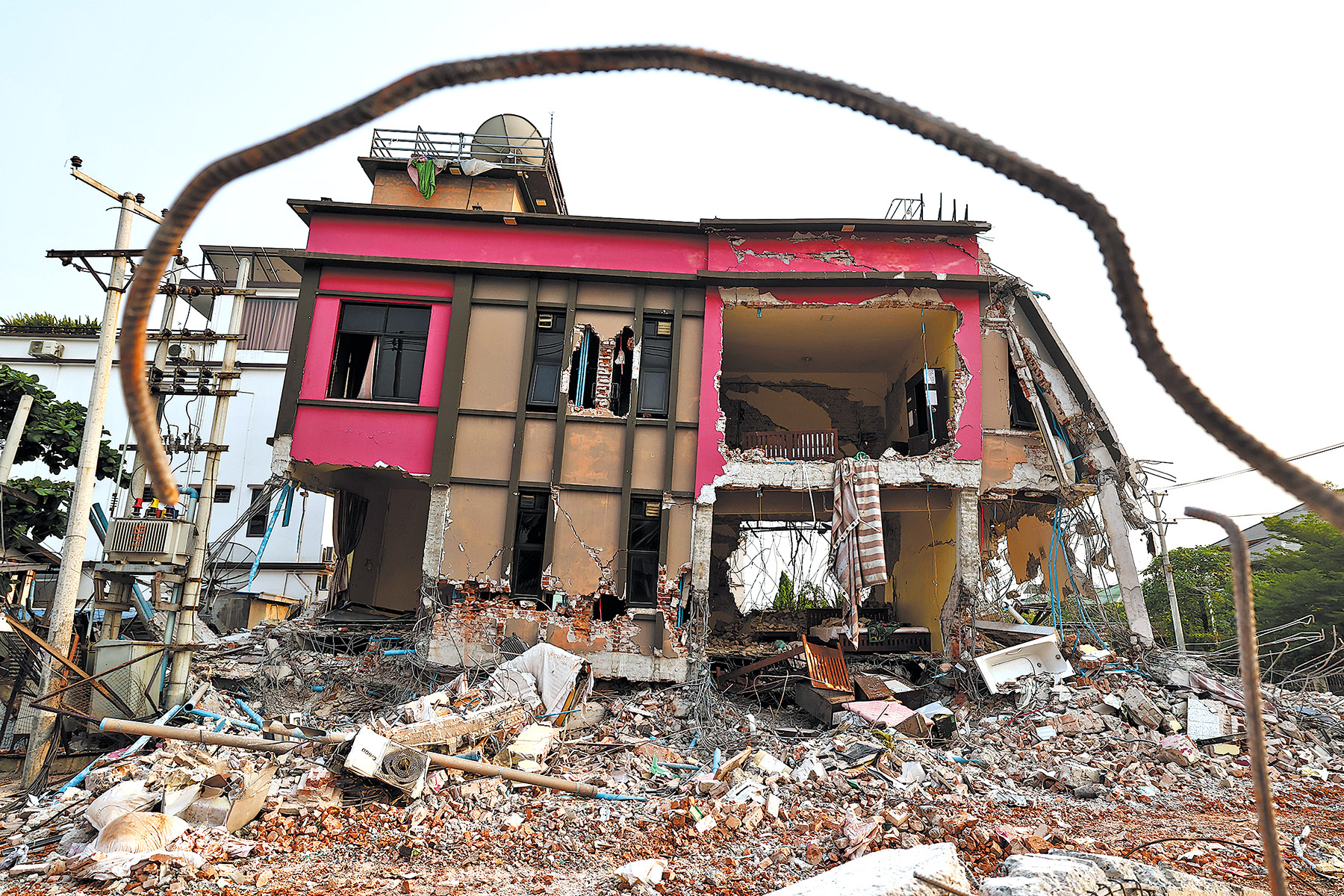Nations should not only be ready for the possibility of an earthquake, but also make efforts to mitigate impacts of such a disaster: Experts

Editor's note: In this weekly feature China Daily gives voice to Asia and its people. The stories presented come mainly from the Asia News Network (ANN), of which China Daily is among its 20 leading titles.
Editor's note: Over one month on after the Myanmar earthquake, this ANN special report examines why it led to so much devastation, the current situation in quake-hit areas, and why earthquake preparedness is crucial.
More than a month after a massive earthquake rattled Myanmar, about 207,000 people, including a large number of women and children, remain displaced, of whom about 42,000 are living in 135 temporary shelters, according to April 22 data from the ASEAN Coordinating Centre for Humanitarian Assistance on Disaster Management, or AHA Centre.
The earthquake was so devastating that it necessitated rebuilding and relocation plans in Myanmar's capital Naypyidaw, Thailand-based online newspaper The Nation reported.
The capital's urban layout is now under review, the article continued, with Myanmar's leader Min Aung Hlaing announcing plans to redesign the city's urban structure during a cabinet meeting held shortly after the quake.
READ MORE: 80% of post-quake building clearance done in Myanmar's Mandalay
To grasp the massive, destructive scale of the recent earthquake, one must understand the many factors that contributed to it, said Md Sakawat Hossain, professor at the Department of Geological Sciences at Jahangirnagar University, Dhaka.
"A 7.7-magnitude earthquake is quite major by itself. Paired with the shallow depth of the origin (about 10 kilometers) and proximity to major cities Naypyidaw and Mandalay, it has caused intense destruction we see today.
"For context, the amount of energy released during this earthquake was about 330 times that of the Hiroshima bombing."
The resulting conditions are nothing short of catastrophic. Food is difficult to come by and hygiene is a massive concern given the lack of access to reliable sources of clean water for drinking and washing.

The temporary tents, per AHA Centre, are constructed from materials that cannot withstand severe weather, such as heavy rain and extreme heat.
In the wake of the earthquake, ASEAN said it strengthened the relief and recovery efforts through ASEAN standby arrangements and ASEAN member states' contributions, among other mechanisms.
Individual countries, neighboring and from farther afield, have also stepped up to give aid, be it through the deployment of rescue workers, paramedics, and even sniffer dogs — some of whom doubled as therapy dogs for survivors and their families, as reported by The Nation.
Reuters published a list of initial aid contributors days after the quake, March 30, which included China, India, the United States, Vietnam, South Korea, Thailand, Russia, Japan, Singapore, Malaysia, Indonesia, the United Kingdom, New Zealand, and the Philippines.
The situation has been so dire that even neighboring nations with complex relations with Myanmar have taken it upon themselves to send in relief and humanitarian aid. Multiple rounds of relief, along with a humanitarian mission, were initiated by Bangladeshi authorities.
According to Bangladesh-based newspaper The Daily Star, two transport aircraft had been sent with 16.5 tons of emergency relief, including dry rations, clean water, oral saline, tents, hygiene products and other essential products to Yangon on March 3.
In a more recent report on Reuters, however, the International Federation of Red Cross and Red Crescent Societies, or IFRC, said on April 17 it had received "only a fraction of an emergency appeal for 100 million Swiss francs ($119 million)" to help in the recovery efforts.
Call for support
The amount is "a lot less than expected", Alexander Matheou from the IFRC told Reuters via video link in Mandalay.
According to a report released by the United Nations on its website on April 18, 4.3 million people urgently need clean water and sanitation.
Malnutrition is a growing concern, particularly among children as food insecurity worsens. Education infrastructure and farmlands have also been hit hard. On top of this, the report adds, women and children have become more vulnerable.
Mariko Hall, external relations officer of the United Nations High Commissioner for Refugees, or UNHCR, told ANN that 17.2 million people were affected by the earthquake. It also reduced homes, hospitals, and schools to rubble, she added, disrupting markets and essential services, including water and sanitation.
For earthquake-affected communities, Hall said the most urgent needs include emergency shelter, core relief items such as solar lamps, tarpaulins, mosquito nets, tents, kitchen sets, and safe drinking water, food, and healthcare.
"Particularly ahead of the monsoon season, with risk of floods and landslides, shelter support is essential so that people have somewhere safe to live," she added.
Given the existing challenges on the ground, compounded by powerful aftershocks and heavy rains, Hall told ANN that to ensure rapid response, they had to reprioritize existing resources and dispatch emergency supplies from Yangon to assist survivors.
Hall said the ability of UNHCR to deliver humanitarian aid and provide protection assistance largely depends on generous donations from individuals and the international community.
"The UNHCR's total funding requirements for Myanmar in 2025 is $88.3 million to assist displaced people and their host communities," she shared, adding that "As of the end of March, less than 20 percent of funding had been secured."
"At this critical time, the people of Myanmar need the support of the international community more than ever."

Looming threat
With the sudden onset of such a devastating crisis, there have been speculations about whether this earthquake is an indicator of disasters that may recur in the future within the region.
Misinformation on social media has exacerbated the collective panic among people about the possibilities of earthquakes and the authorities' ability to mitigate the impact of such disasters.
In this regard, Hossain told ANN, "Earthquakes are the only natural disasters that cannot be predicted even a few seconds in advance."
There is no way to warn authorities and the public. This region has many large-scale fault lines, of which many are quite active.
"This includes the Sagaing fault which has experienced about nine major earthquakes in the past 100 years, the Chittagong Coastal fault, the Main Frontal Thrust fault, the Dauki fault, the Oldham fault, the Madhupur fault and the Sylhet fault," he said.
Hossain said most of these faults have recurrence intervals between 20 and 30 years and 200 and 500 years. These faults can impact India, Bangladesh, Nepal, Bhutan, Thailand and Myanmar.
"Thus, I cannot say when or exactly where there can be an earthquake, but I can say there is a looming threat to the region, and we must be prepared," he said.
While analyzing the possible risks of major earthquakes in the region, Hossain mentioned that a lot of major cities in South Asia, such as Mandalay, Naypyidaw, Bangkok, Silchar, Kathmandu, Kolkata, and Dhaka, are built on flatlands and soft sediments.
Earthquakes in flatlands and areas with soft sediment, like delta and basin regions, can result in unique and potentially damaging effects, including liquefaction and ground deformation, which increases the odds of higher damages to the region experiencing the earthquake, including possible subsidence and landslides.
Thus, it is crucial for nations, especially those with densely populated areas and cities, to make necessary arrangements to not only prepare for the possibility of an earthquake and mitigate the possible impacts of such disasters, but also to spread awareness to the public about what can be done and how they can be prepared themselves.
ALSO READ: UN official: More post-quake assistance needed for Myanmar
"Authorities must increase their knowledge and vigilance over earthquake hazard assessment capacity, and by investing in equipment and stations that would observe overall seismic activities within the region, giving them the scope to collect as much information as possible.
"Reducing vulnerabilities to power, water, gas and telecom networks is also an extremely important step for authorities, as these infrastructures often take the first hit. Investing in rescue equipment is also a must for each nation in this region," Hossain said while highlighting some of the crucial steps required for managing and preparing for the possibility of major earthquakes.
"Policies and building codes must be updated and strictly implemented to ensure proper construction of earthquake-resistant establishments or infrastructures for all new projects. Authorities must also enforce retrofitting and other engineering measures for older constructions and buildings, allowing impending damage to be minimized," he added.
He further mentioned, "There should be campaigns and training available to make people aware of what to do in case of such an emergency, and make it available in all educational institutes, at all levels and capacities, to better understand what the disaster is and how to keep themselves prepared for it."


